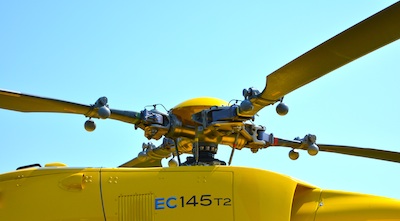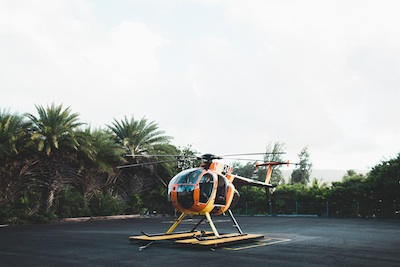by Nina Post
My knowledge of helicopters is limited to what I researched for one of my books, along with 80s TV (The A-Team; my husband loved Airwolf).
But I liked this metaphor of the relationship between the helicopter pilot and the air traffic controller to show what's like working as a one-person team. Let's hope I don't torture it *too* much. (If anything, you'll learn more about helicopters.)
Helicopters present a particular challenge to controllers. The advantage to working with helicopters is the flexibility, but there's also an unpredictability that requires a unique combination of skills for the controller. The unpredictability of external factors affects you much more as one person, and it requires skills that those working with the fixed-wing don't need.

Last week on the blog, I talked about boosting the efficacy of teams. A larger company is a large team (which has teams within those) that can be likened to a fixed-wing aircraft, which takes longer to get moving because there are many more people involved and it takes a lot more coordination to do even one simple thing. That's the inefficiency of working in a large team. Once you add even one more person, everything gets more difficult to coordinate and make happen.
As I can continue to treat this metaphor like Tim Roth in Reservoir Dogs, here are a few things to keep in mind as a one-person company:
Clarify your destination and the route you're going to take to get there.
Even a basic plan is good. A fixed-wing aircraft operates in a more fixed path, especially when departing the runway, e.g., launching a new product, which requires a lot of energy, people, and sign-offs. When you're one person running a business, getting that many resources together just to leave the runway isn't your concern.
But even though I wrote about how to boost your team's efficacy, the truth is, it's an ideal. It's possible, but unlikely. Most teams are grossly inefficient, and people's flaws typically become more overt and problematic over time. Exceptions to this are rare. They might have built in the values, rules, and system from the very beginning and adapt to new variables. Or their magic is strong enough to overcome the personality conflicts and inefficiency. But most likely, a large team is stumbling all over itself and can barely get through one step of a huge process. This can be to your advantage.
However, even though your company has agility and autonomy, it can't go in multiple directions at the same time. Usually you have your head down, frantically trying to keep afloat. But it's worth revisiting your plan and see if you might need to modify it from time to time.
Pick up a little speed to outrun turbulence
A fixed-wing aircraft prefers to take off into the wind so they can use it to climb faster, and it isn't affected by the wind while taxiing because its wheels provide control.
Wind affects helicopters, too. Use "translational lift" to pick up speed and get into calmer air. At a slow speed, the downwash of the main rotor creates turbulence, and as it moves faster, the helicopter can outrun the turbulence and more efficiently generate lift.

When there's turbulence, you can't just sit around and wait. Sometimes things start to close in on you and you can't keep moving slowly--you have to do something to move faster and out of the way. It's times like these when you can't underestimate yourself and what you have the energy and wherewithal to do.
Any given level of turbulence affects you more, but on the flip side, you can pick up speed and push through the turbulence if you just make up your mind about where you're heading and put your resources (time, energy, skills; "blood, toil, tears, and sweat") into that.
At the pilot's own risk
Helicopters can only get clearance from the controller when taking off from what's called a movement area -- taxiways and runways. If a chopper takes off in a non-movement area, the controller can't clear it for takeoff. It's at the pilot's own risk. Sound familiar?
As an example, if a helicopter wants to depart from an FBO ramp, like a hospital helipad on airport space, the departure (or landing) risk would have to be on the pilot. The pilot is solely responsible for avoiding any obstacles in his departure area. That's sort of like the risk dynamic of a one-person company: you're in control, but can't hide behind bureaucracy if things don't go your way. You own the risks, but also the rewards.

Land and Hold Short
In a Land and Hold Short (LAHSO) operation, the controller directs the helicopter to land on a specific part of the runway, especially if the runway intersects another runway. It's not dissimilar from seeing a market opportunity, pivoting towards it, and getting your product into the hands of customers at just the right time.
Even a smaller helicopter can wield strong outwash vortices similar to the wing tip vortices of a larger fixed wing aircraft. That downwash can rock a Cessna, easy. Being the little guy doesn't mean the bigger company is automatically going to win. Don't underestimate your ability to win if a fixed-wing gets too close.
Sources:
Rotary revelations: managing helicopter operations around fixed-wing aircraft demands a little finesse and a lot of clarity on the part of pilots and controllers
Tarrance Kramer, IFR. 33.1 (Jan. 2017)